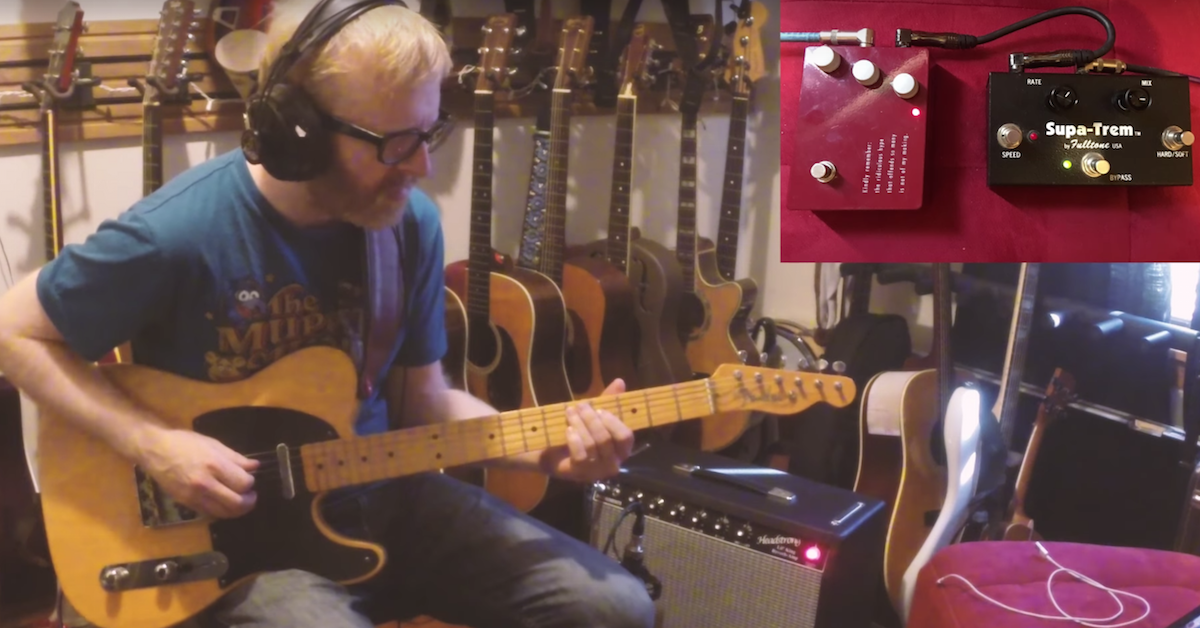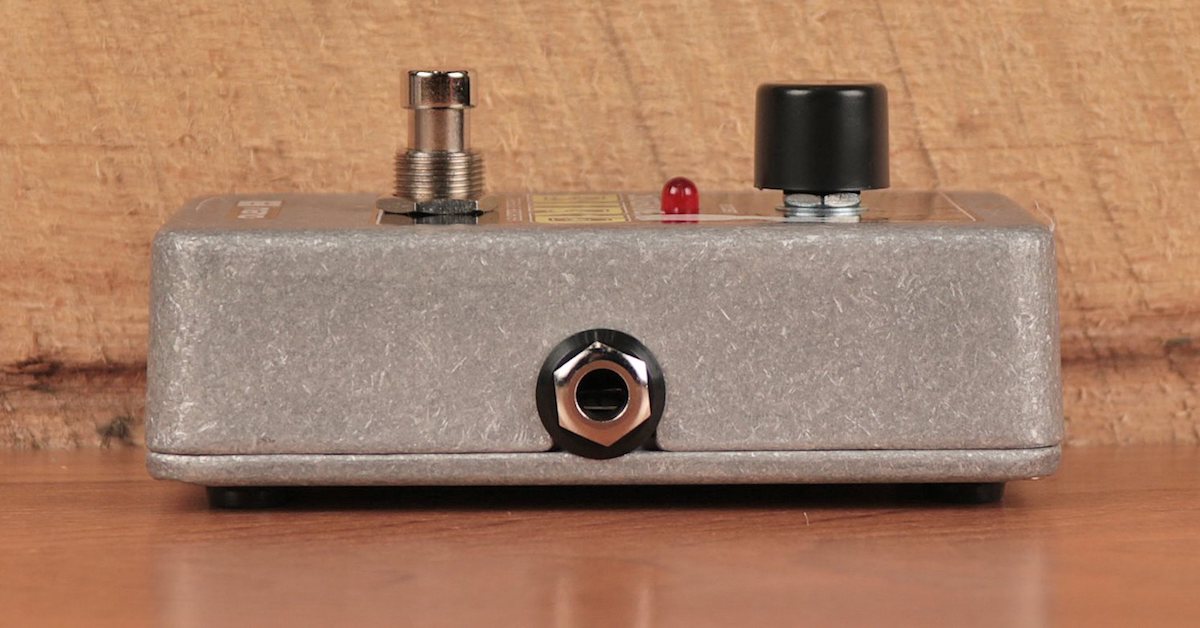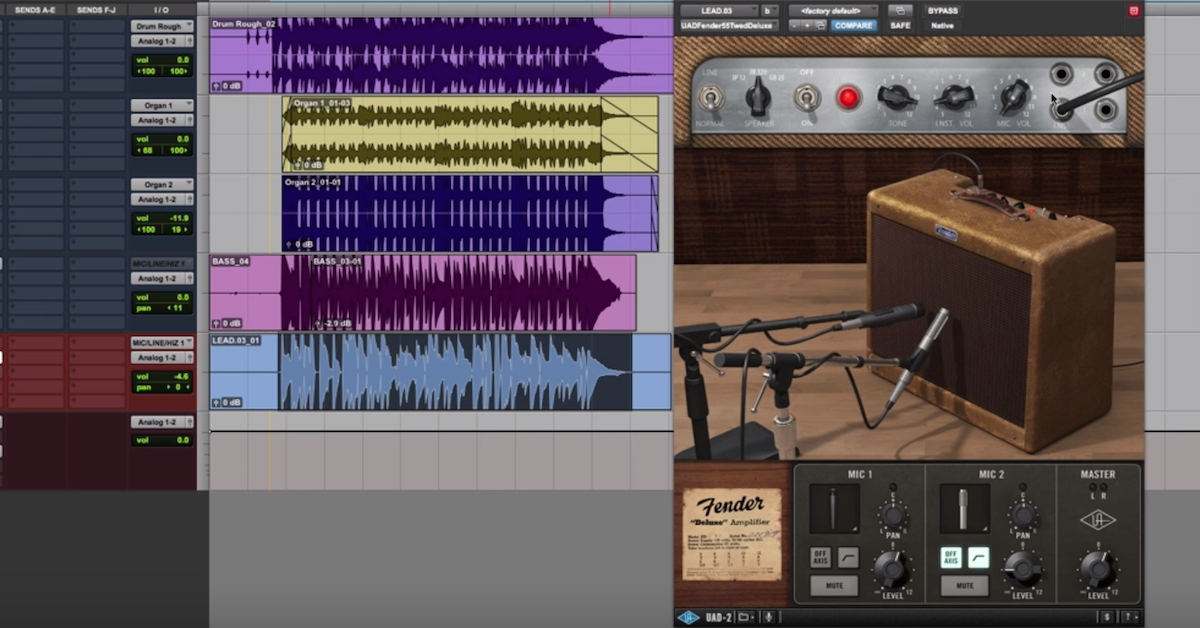Fender Guitar Amp EQ — Technical Breakdown + Audio Examples
Now, specifically, I’m going to be referring to the Tweed era, the Brownface era, the Blackface era, and the Silverface era of Fender amps.
Now, the EQ on these amps are subtractive EQ. This is something that people who have owned these amps for many years don’t often understand. What this means is that if you turn all the treble, the bass knob, and the mid knob if it has one, if you turn it up to 10, then essentially the amp is flat.
Now, that’s not entirely true, it’s a little misleading because a guitar amplifier is never completely flat. The speaker colors it a lot, so if you actually had a truly flat signal, it would probably sound horrible to your ears. But as far as the EQ on the amp is concerned, that is it’s most flat position.
So, from there, as you’re turning the bass and treble knobs down, you’re actually cutting those frequencies. There’s a certain amount of Fender amps that actually didn’t have a mid knob on them. The Princeton’s, and the Deluxe’s, and certainly a lot of the Tweeds. On these amps, the mid knob was kind of preset at 8. So just straight out there, imagine there was a mid knob, and it was on 8.
We’ll talk about how these knobs interact with each other a little bit. So let’s say they’re all on 10. You have your bass and treble on 10, your mid would be preset on 8 if we’re talking about a Princeton Reverb, for example.
As we cut back the bass and treble knobs, we’re going to be allowing those mids to pop through because remember, the mid is going to stay at 8. So every time we knock it back, we’re allowing more room for the mid-range. The more we turn up the bass and the treble, we’re kind of keeping the mid where it’s at.
This is a great thing to remember when you’re plugging various guitars in and messing around with different volumes on the guitar amp because these are all elements that affect one another.
Here’s an example of how they affect each other. Obviously, we know that as we turn the volume up, the amp overdrives a little more, and so if we think about the bass and treble knob, these may excite the overdrive in a particular way, either one you like or you don’t like.
So you can use those knobs to kind of either get the high end to kind of sizzle in a way that maybe is really interesting with where you have the volume knob cranking at, or to take away a little bit if it’s a little bitey.
But it’s worth mentioning that even if you have the volume at, let’s just say 3 as an example, which I had the volume in the examples that I’m going to play for you, I kept it at 3 the whole time.
And if we have the treble and the bass at 3, and then we move each the treble and the bass up to 6, it’s not the same sound, right? Even though they’re moving up in the same increments. This seems probably pretty logical to a lot of people. We take it for granted sometimes, because as we’re playing, we just kind of throw things in the middle, and we think that’s the middle zone or the best spot for it.
When I’m recording sometimes and trying to get a great sound out of an amp before I plug any pedals or anything in, I’ll spend some time with the amp and just kind of get a sound grooving. You know, how overdriven do I want it? And I’ll really kind of push each of those treble and bass knobs to see how it’s reacting in the room and with the microphone.
It’s worth noting that sometimes, because of the way that the frequencies excite the sound, it might be worth really cranking the high-end or low-end, and it might be coming out of the guitar amp and sounding a little harsh, but when you throw a microphone in it, and then maybe use a console EQ or something to tame the highs a little bit, something magical kind of happens that wouldn’t happen if you recorded a duller sound and added the EQ later. This is just due to the inner workings of the amplifier and the tubes overdriving, and what frequencies are getting overdriven.
But all these little minute details add up when you’re trying to really capture an amazing guitar tone.
Another thing worth mentioning is you’ll notice on tube amps as you crank the volume up and they start getting distortion, which is very desirable, you’ll notice that if they bass it too high, it happens to get a little flabby and tubby. Obviously, the best way to deal with this is to turn it down. Some people using Marshalls or Fenders, which both operate on a very similar concept with the subtractive EQ, they’ll turn a lot of the tone knobs up all the way, and then just really pull back the bass so that those bass frequencies aren’t getting flabby.
Not all amps operate in the same manner. So it’s good to spend some time and figure out how your amp works. For instance, like Marshall and Fender work with these subtractive EQ philosophy, but Fender amps have a little bit of a different concept when they’re dealing with the EQ section on their amps. They find that if you go to plug in through a Vox, the same principles aren’t going to apply, so it’s always good to know that if you’re playing through a Mesa Boogie or you have some sort of other amp, not to just assume that it’s running with the same sort of circuitry.
Let’s listen to the examples. The amp I was using is a Headstrong Lil King Reverb, which is an exact replication of a 1964 Blackface Princeton. The only difference being that I have a 12” speaker put into it, rather than 10, because I prefer that. The guitar was an American Standard Stratocaster, fully stock in the neck position, and I was only using a cable straight into the amp.
The only other variance between the two examples is example one used reverb that was built into the amplifier and I used a guitar pick, and example number two was no reverb, and I used my fingers.
[example 1A through 2C]
Next time you’re working on getting a great guitar sound, spend a little time in the room with just the guitar and the amplifier and see how their relationship is together. Mess around with it, mess around with the volume knob of the guitar and the tone knob of the guitar. Mess around with all the tone knobs on the amp and the volume knob, and just see how they all interact together because it is a bit of a puzzle, and small adjustments to each of those will create big variances.





